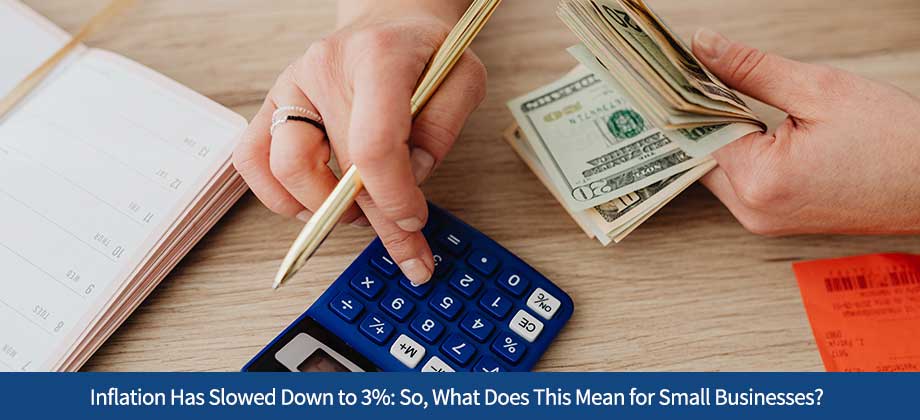Inflation Has Slowed Down to 3%: So, What Does This Mean for Small Businesses?

The latest consumer price index report shows that the year-over-year inflation rate dropped from 4% in May to 3% in June, which is a positive sign for small business owners. This news comes as a relief to many small business owners who were concerned about the rising inflation rates in recent months. Inflation has slowed down to a rate that is closer to the Federal Reserve’s benchmark target rate of 2%. In this blog post, we will explore what this means for small businesses and how they can prepare for the future.
Small businesses are the backbone of the US economy, and inflation can be a significant challenge for them. When inflation rates are high, it creates a series of problems for small businesses, such as rising costs, lower profit margins, and reduced purchasing power. However, with the current inflation rate of 3%, small businesses may be able to breathe a sigh of relief. Inflation has slowed down, which means that the pricing of goods and services may not rise as steeply as before. This could lead to more stability and predictability in the market, which is good news for small businesses.
Key factors that contribute to inflation rates are energy and transportation prices. In June, due to falling energy and transportation prices, inflation rates dropped significantly. This is an encouraging sign that inflation rates may continue to slow down in the future, which could benefit small businesses. When energy prices are lower, it reduces the transport costs and the overall cost of production. This can allow small businesses to keep their prices competitive while maintaining their profit margins.
Core inflation is another crucial indicator that the Federal Reserve tracks closely. This measure excludes volatile food and energy prices and is considered to be a more accurate measure of where inflation is headed. The good news is that core inflation only grew by 0.2% month-over-month in June, after steadily rising by 0.4% or more for the past six months. This is a positive sign that inflation rates may finally start to stabilize after a period of instability.
The slowdown in inflation rates may also have an impact on the upcoming Fed meeting in September. With inflation rates low, it’s unlikely that the Fed will hike rates again. This is great news for small businesses as it suggests interest rates may not rise in the coming months.
The Federal Reserve usually hikes interest rates to control inflation. In a high inflation environment, raising interest rates can help to slow the economy down and keep prices steady. However, the current trend suggests a slowdown in inflation, indicating a more stable economy. This stability reduces the necessity for the Federal Reserve to hike the interest rates, hence it is unlikely they will do so. Furthermore, hiking rates could potentially disrupt the current economic balance, introducing unnecessary risk and volatility into the market. Therefore, in the interest of maintaining stability and supporting continued economic growth, it is probable that the Fed will refrain from a rate hike in the near future.
In conclusion, the slowdown in inflation rates is a positive sign for small businesses. It can promote more stability in the economy, which is essential for small business growth and success.

